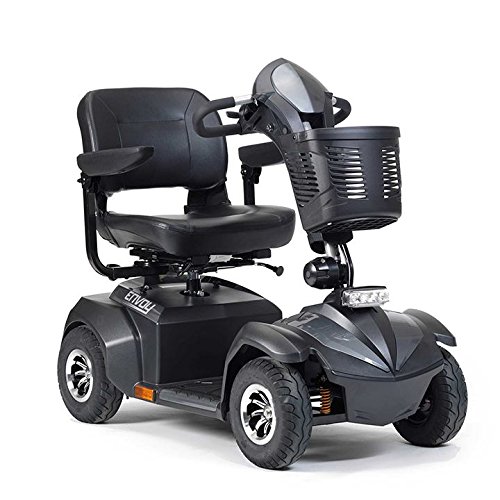Why You Should Concentrate On Making Improvements To Modern Mobility S…
페이지 정보
작성자 Melina 작성일 24-12-23 15:28 조회 60 댓글 0본문
 Modern Mobility Solutions
Modern Mobility SolutionsDiscover how a dynamic tapestry of new technologies stretches beyond traditional boundaries, changing the very essence of mobility. These solutions, from electric vehicles to customized services, are changing the way we move.
Find out how optimizing transportation systems can lead to more efficiency, which will result in less congestion and a more sustainable urban development. Our EMQX MQTT platform is perfect for real-time data exchange across these systems, as it is capable of scaling and is designed to handle the use of a large number of devices simultaneously.
lightweight electric mobility foldable scooter Mobility
four wheels electric mobility scooter mobility is the use of electricity to power vehicles, such as three wheel electric mobility scooters bikes and cars. This technology reduces carbon emissions and air pollution, while providing consumers with an easier and safer transport options. However, the transition to electric mobility is not without obstacles. These challenges include minimizing the cost of energy, reducing the fear of driving in a wide area, and creating an efficient charging infrastructure.
To address these issues solutions are being developed around the world to promote emobility and reduce environmental impact. These solutions include leveraging methods for swapping batteries, advancing battery technology to extend range and speed of charging, and increasing the number of charging stations. Tax credits and subsidies can be used by governments to encourage people to buy EVs.
The growing demand from consumers for eco-friendly transport options has led to a surge of innovations aimed at improving sustainability. This includes mobility-as-a-service, smart parking and traffic management systems, shared electric mobility, and even high-speed electric vertical take-off and landing (eVTOL) taxis.
E-mobility is a key element of a larger vision for the future since it reduces emissions and congestion while providing better travel experiences for urban populations. It will take a massive transformation of the transportation system and the development of a sustainable energy model to make it fully beneficial to society.
Therefore, it's important to have a clear understanding of the risks and impacts associated with each aspect of this revolution. This includes the need to consider the impact on the environment, economy and the entire society. There are a variety of tools are available to assess the impact of different technological advances, including life cycle assessment methodologies.
These tools can help companies make informed choices about how to invest in e-mobility. By integrating a variety of solutions into their operations, companies can ensure that they're getting the most benefit of this innovative technology. This will eventually lead to an environmentally sustainable future for all of the globe. TUV SUD, with over a century of expertise in safety engineering for automobiles and a wide range of services, can provide comprehensive assistance to businesses on their eMobility journey. From the earliest blueprints to commercialization on the market We're your one-stop resource for the safe integration of lightweight foldable electric mobility scooter mobility technology.
Connectivity
In an era where customer experience has become the new standard for service seamless integration is the key to creating an effective mobility solution. Find out how the deployment of connected vehicles and integrating them into an intelligent system can transform the way your organisation operates.
The emergence of shared mobility services is transforming the ways people travel. These innovative urban transportation strategies provide alternatives to cars and offer a promising method to reduce congestion and carbon emission in cities.
They face significant challenges in making them a viable alternative to personal vehicle ownership. They include the need for a robust transport infrastructure, the need to make fares affordable and the implementation of the equity principle that calls for equal access to mobility solutions for all sections of society.
Despite these obstacles, the growth of shared mobility services has been rapid. Many of these solutions use data and smart algorithms to enable travellers to choose and pay for multiple transportation options within a single application. They also provide real-time updates as well as personalised services which makes them easier to use as opposed to traditional methods of commute.
The availability of affordable lightest electric mobility scooter vehicles and charging stations is one the main factors driving the growth of the sector. As a result, more and more consumers are switching to these clean and efficient methods of transport. They're being joined by towns and cities, which are investing in sustainable, green transportation infrastructure to encourage cycling, walking, public transit, and sharing vehicles as alternatives to cars.
Another factor that is driving the shift towards sustainable commuting is micromobility. These vehicles that are lightweight electric folding mobility scooter - usually electric-powered scooters and bikes - are being integrated into urban transport networks, providing the first and last mile option for commuters and decreasing the need for private car ownership.
Public-private partnerships are vital to overcome these issues and ensure micromobility's viability over the long term. This is especially crucial for urban mobility that requires a significant amount of investment and needs to be adapted to the local environment. MaaS (mobility as a service) platforms are a good example of this that have been developed by a mix of urban transportation operators technology companies, as well as payment providers.
Sustainability
Sustainability is a rising concern for modern mobility solutions as both governments and consumers require environmentally friendly transportation alternatives. Discover how seamless integration between transportation modes, real-time information and personalized services can transform the way you commute while reducing the environmental impact.
Fossil fuel emissions contribute significantly to climate change. These emissions also contribute to the pollution in central city areas and congestion and public health issues. People can live a healthier lifestyle and a more efficient time of travel by promoting sustainable solutions to mobility like cycling or walking.
Shared vehicles are another way to encourage sustainable mobility. They generate more revenue through passenger fare than they cost to operate. In turn, they are less likely to require taxpayer funds than traditional public transport.
However sustainability is a priority, and sustainable mobility requires a holistic approach that goes beyond reduction of car traffic and enhancing the efficiency of infrastructures in place. It must involve the promotion of sustainable transportation options as well as the re-design of urban areas to free it from the presence of private vehicles.
Smart mobility measures can improve the appeal of urban spaces and make them more accessible through encouraging a modal shift to walking and cycling. They can also improve the conditions for cycling, public transportation, and telecommuting. They can also incorporate strategies to increase the perceived cost of motorized vehicles and encourage a modal switch towards public and active transportation.
The implementation of congestion fees for example, for example, entices drivers to think about alternatives than their vehicle. Optimising traffic flow with intelligent road systems can also increase the efficiency of vehicles and ensure safety. The use of IoT technology enables vehicles and infrastructure to communicate, which allows for the monitoring of driving behaviour in real time and detecting congestion sources. The information is then used to adapt traffic management systems to the needs, helping reduce congestion and improve the overall operation of the transportation system. This improves the quality of life for everyone and less noise pollution.
Enterprise Mobility
Enterprise mobility refers to the ability of employees to work from anywhere on a variety of devices. This technology includes mobile devices, cloud storage and applications that allow workers to access their data and communicate with colleagues from anywhere. Enterprise mobility solutions can help improve communication and facilitate more efficient decision-making. They can also reduce the amount of paper and storage space needed. For instance, employees can upload a presentation on the desktop computer to cloud storage services and then access it on mobile devices to present at a client site.
Modern mobility is always changing to meet the needs of consumers and business. The growing concern for sustainability is driving the demand for environmentally friendly transport options. This can be achieved through various innovative solutions. These include telematics systems that enable infrastructure and vehicles to connect with each other, improving the flow of traffic and reduce congestion. Additionally, these solutions can integrate various transportation modes to provide a seamless and personalized journey.
Mobility solutions must be designed to enhance customer and guest lives. A hotel, for example, could benefit from equipping its staff with mobile devices so that they can easily and quickly access guest information. This would enable staff to serve their guests better, which in turn can increase customer satisfaction and loyalty. In the same way, healthcare providers can provide better patient care by providing them with the tools needed to work remotely.
To implement these features companies must invest in enterprise mobility management (EMM). This includes devices and software that can manage the security of company-owned and personal devices, protect sensitive information from cyber threats and provide a pleasant user experience. It also helps companies save money by avoiding the expensive cost of replacing or repairing damaged or stolen devices. EMM can also help support BYOD initiatives by allowing employees to use their personal devices for business use. It is important to have a solid acceptable use policy before implementing EMM. This will help to set clear expectations for employees' behavior and help reduce the risk to the data security of the company.

- 이전글 See What Repair Upvc Windows Tricks The Celebs Are Making Use Of
- 다음글 20 Fun Facts About Audi A4 Key Replacement
댓글목록 0
등록된 댓글이 없습니다.






